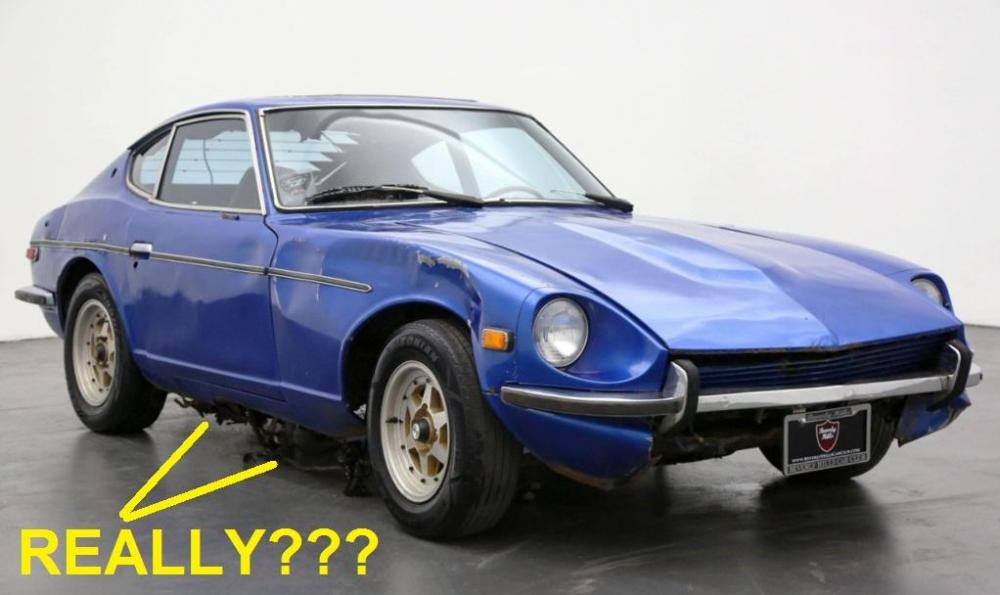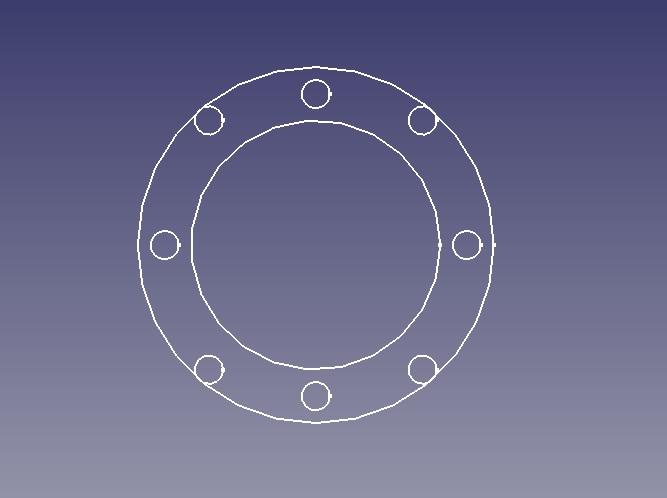Everything posted by Captain Obvious
-
Valve cover and valve seal recommendations
I don't have any input on the valve cover gasket, but for the valve stem seals... It is my understanding that the Viton is the "top of the line" and polyacrylic is not as good. I don't think you should pay more for polyacrylic, and in fact, I think the price should be lower for the polyacrylic. Any of you engine guys have input to confirm or deny my understandings?
-
Z's on BAT and other places collection
Yeah, everything about that car says 280 except for the bumpers and the steering wheel. Engine compartment, dash, door panels, rear panel, shift knob, voltmeter... Everything. Does the VIN work out to a 72? And regardless.... Are you friken' kidding me? They ought to be embarrassed to drag that across their floor for the pics. It must have left a pile of parts behind when they drug it back out!
-
240ZBUILTBYME 1971 240z HS-001063 Project Georgia
Your 5mm sheet sounds perfect as long as it's hard enough. Oh, and you really want smooth jaws in the vise. if your vise has serrated jaws you could put two small pieces of flat sheet metal on either side to smooth out the jaws. Good luck and here's hoping they come out without much fuss.
-
Ruined Wheel Hub?
Oh, and glad your issue was pretty much a non-problem!
-
Ruined Wheel Hub?
Well I wasn't going to mention it before, but since you asked... The reason you can't find what he's talking about is because we're all at the front of the car except AK... He's at the rear of the car instead of the front. I was going to just let it go until now, but I'm thinking he's been sniffing the spray cans again and someone might want to think about doing a cabin fever intervention.
-
240ZBUILTBYME 1971 240z HS-001063 Project Georgia
I was going to tell you to get those needles out of the pistons as soon as you could. I didn't like the way they're sticking out of the pistons laying on the bench like that. Too easy to damage them. So I'm no carb expert, but for pulling stuck needles I've had good luck using some thin pieces or (grippy) rubber sheet on the needle and clamping down with a bench vise. Sorry, but I don't have any pics. The rubber sheets will hopefully spread the force out over a large enough area so you don't dent the needles, and the stickiness of the material hopefully provides the friction required to get them to move without slipping. Clamp the whole needle length and a little twist-and-pull. I've had good success with that.
-
Head gasket leak. Any video tuts?
Perfect. I should have known!
-
Safari Gold(en) Birthday
Happy Birthday!!!
-
Head gasket leak. Any video tuts?
Site, You beat me to it!!! How'd you get so funky?
-
Fuel tank install
Got it! Saved until I don't remember where it came from!
-
Electric fuel pumps
"Who? Me?" He asks, sounding a little startled. As if he was interrupted doing something he ought not to be doing...
-
280z tach capacitor identification
Another option would be to attach the tach to your car and use some other device as a "reference" to calibrate the one you messed with. If you have a timing light with an RPM display, or an oscilloscope, or even meter that will read frequency. You could use one of those to monitor the engine, hold the RPM steady at some level and then compare what you get on your tach to what you see on the reference. Adjust the pot until the two read the same. Not as elegant as calibrating it on the bench with a signal generator, but if you don't have a sig-gen, then you do what you have to do.
- Pikes Peak trip!
-
280z tach capacitor identification
Proof is left to the student. Haha!!
-
280z tach capacitor identification
Crap. I was worried about that. I found nothing on the internets for either of those numbers. It could be as simple as a resistor or capacitor array, but I suspect it's not. The reason I was worried about them is that I don't see any transistors on the board. And I'm sure there are some transistors at play somewhere in the circuit. They aren't driving the tach completely with just resistors and capacitors. Problem is if you can't see the transistors, then they're probably buried inside those packs. One could potentially infer the function by reverse engineering the rest of the circuit and try to figure out what is inside those packages. Glad it won't be me. LOL. In any event, it sounds like you're out of the woods and that effort is unnecessary.
-
280z tach capacitor identification
Thanks for the pics. I'll dig through them when I get a chance. But I'm in agreement with crayZlair. I'm thinking that's not a cap at all. What are the long slim rectangular things with a bunch of leads? Can you read the numbers on them? Dark maroon or brown things with seven leads or so?
-
Electric fuel pumps
I've got very little direct experience with the whole fuel pump thing, but since I'm planning some evil carb mods with my new motor, I'm going to have to get involved with this as well. And with that in mind, I'll be watching your progress. So one thing to watch for is... Does the pump require some minimum amount of fuel to flow in order to keep the pump itself cool? If so, you must use a bypass style regulator and shunt excess fuel back to the tank. However, if the pump doesn't require cooling like that and is designed to be able to constantly push against a "mostly closed door", then you could get away with a dead-headed arrangement. I've heard with my own ears two of the aftermarket pumps and they were loud. I'll see if I can figure out what they were. My buddy put one in his car and the drone made him crazy. He replaced it with another brand and it still drones, but not as bad as the first one. Maybe @GGRIII come in and tell us what brands he used.
-
BMW 507 on BaT
That's a great call!! What a sight to behold when you got back from your quick ride on your 1952 Vincent Black Lightning. Good times... Good times.
-
Air / Fuel Meter Recommendations
-
BMW 507 on BaT
Wow that's pretty. Wow that's expensive.
-
280z tach capacitor identification
I can't tell what the component is from that distance, so I'm not a lot of help there. However, I CAN tell you that the schematic posted above is for the earlier 240 tach with the inductive pickup, and it is not applicable to the 280 version. So not a lot of help there. Can you take a closer up shot of the cracked component? Will your camera focus that close in? And can you take a pic of the circuit board bottom that it solders into? I might be able to figure out what it is by looking at the circuitry. Maybe. Might be able. Maybe.
-
Citric acid and rust
Thanks for the input @240260280. It seems that hydrochloric acid is clearly the most effective. Comes with all the safety downsides, but definitely the most effective. My plater said that everything was going to go through a quick hydrochloric dip before the plating solutions. My thought was to get as much off as I could beforehand and hopefully his quick hydrochloric dip would take care of the rest. I was thinking that his hydrochloric dip would take off any surface rust that developed while the parts sat in boxes waiting until I had everything prepped and ready to go.
-
Air / Fuel Meter Recommendations
LOL. I was just thinking that if I really got into it, I could probably program something up to control the heating element for the sensor. But I got bigger fish to fry first. Plenty of other projects in the way before I would get to that point in my list. Haha! I've never messed with the ESP8266 stuff. I've got just enough experience with PICAxe and Arduino stuff to be dangerous. The ESP board is way more powerful than anything I've needed so far.
-
Air / Fuel Meter Recommendations
Thanks for all the input guys. I was thinking I would put mine in the glovebox for now as well. I'm still hoping to get a couple weeks more driving out of my car before the season ends though. I don't want to go dropping the exhaust now. It won't be long before they salt the roads and I'll do some of this work then.
-
Just Another Damned Z Car Project Thread
And here's what I was talking about maybe not having enough meat with a 100mm OD. Here's a quick sketch I threw together... 100mm OD, 70mm ID and two sets of bolt holes. One on a 60mm square and the other on a 60x70mm rectangle. All with the centers concentric. It looks to me like you might have some troubles with some of the holes being to close to the edge: So I don't know if the bolt pattern for the 350Z throttle body is 60x70, but I just used what I could discern from your ruler pics earlier. It looks like trouble.










